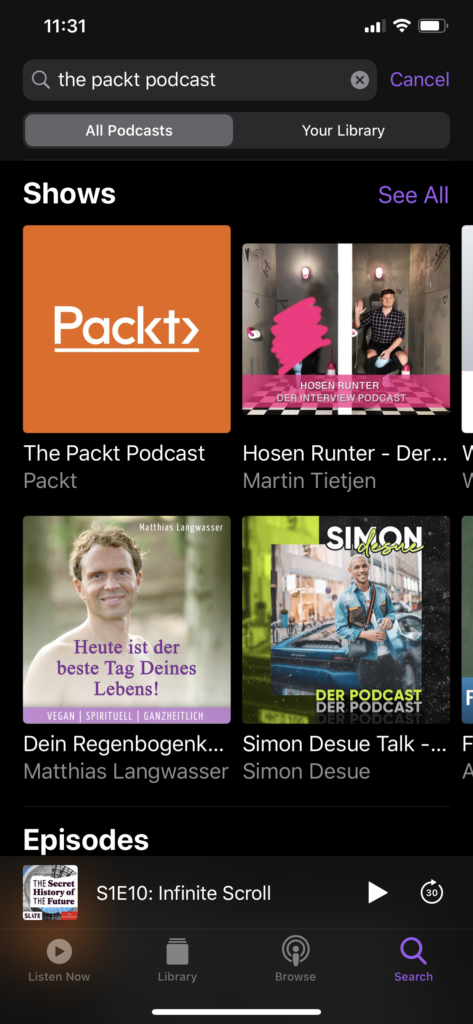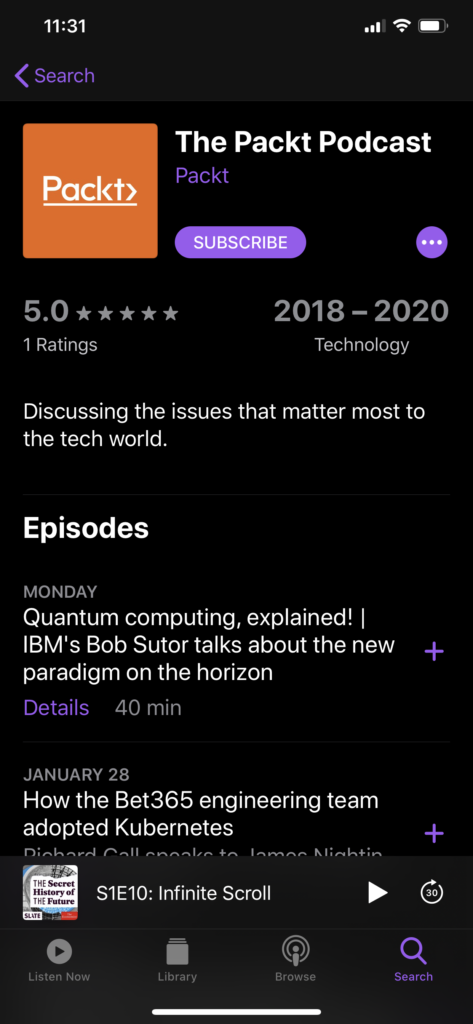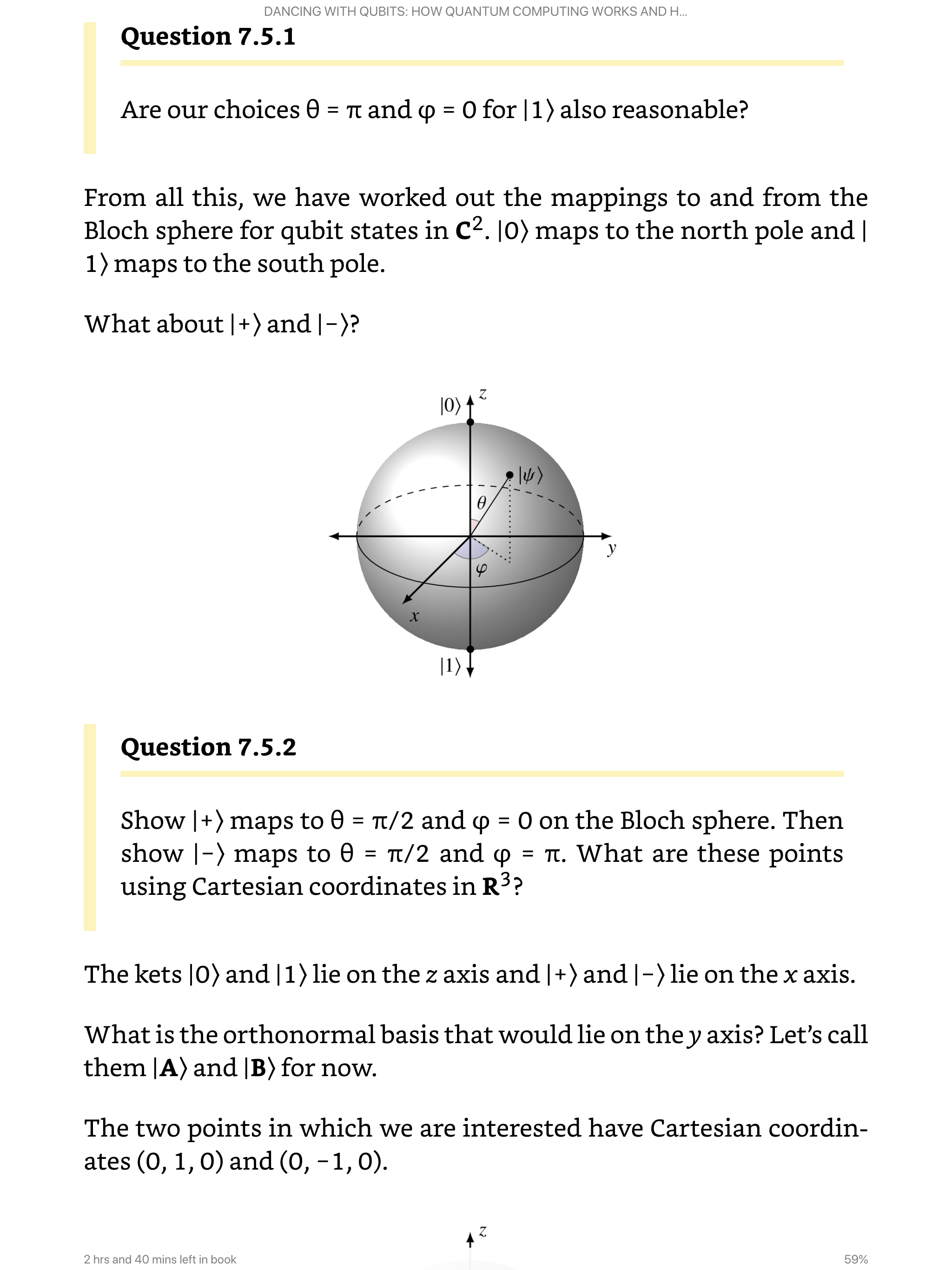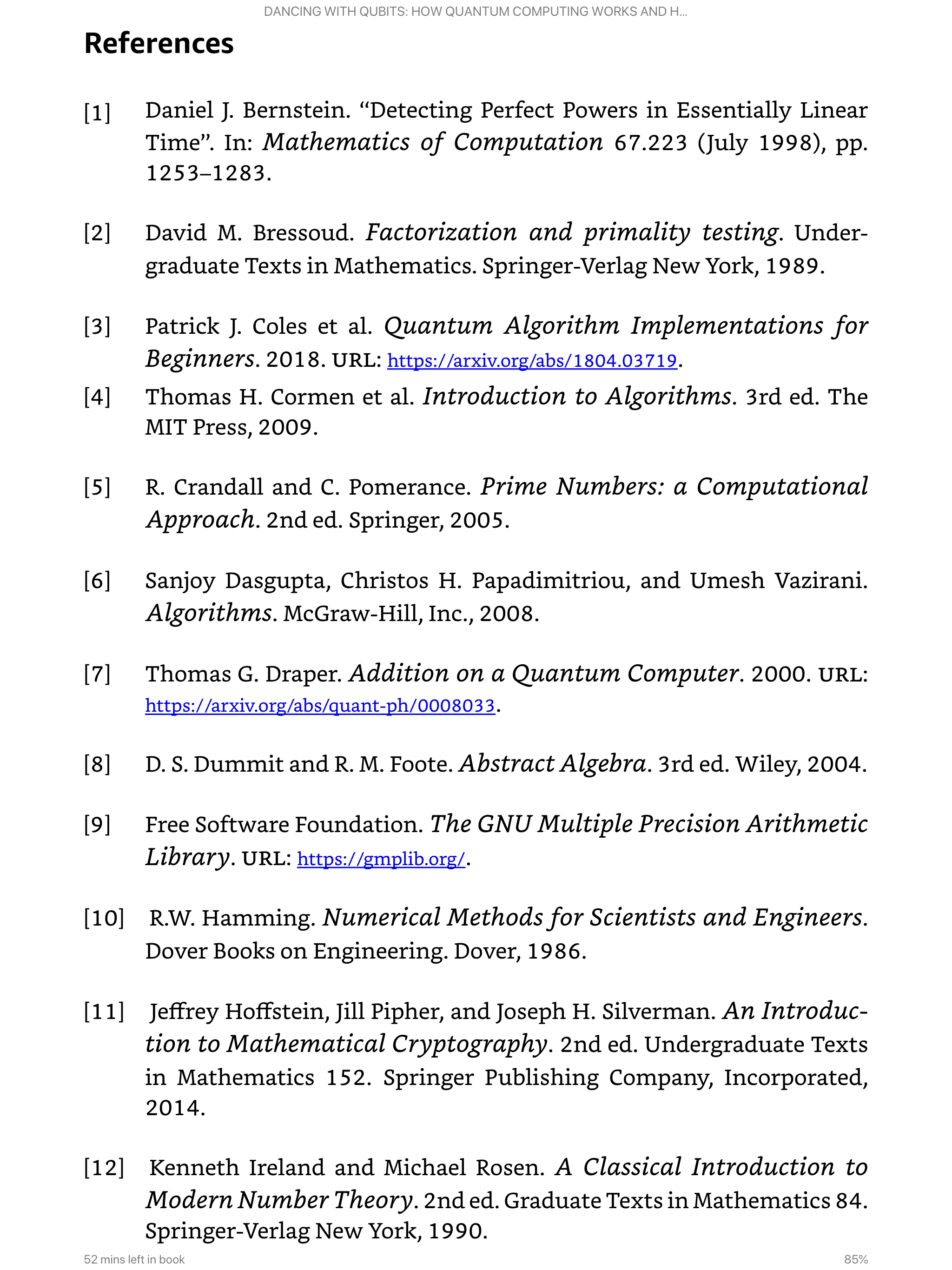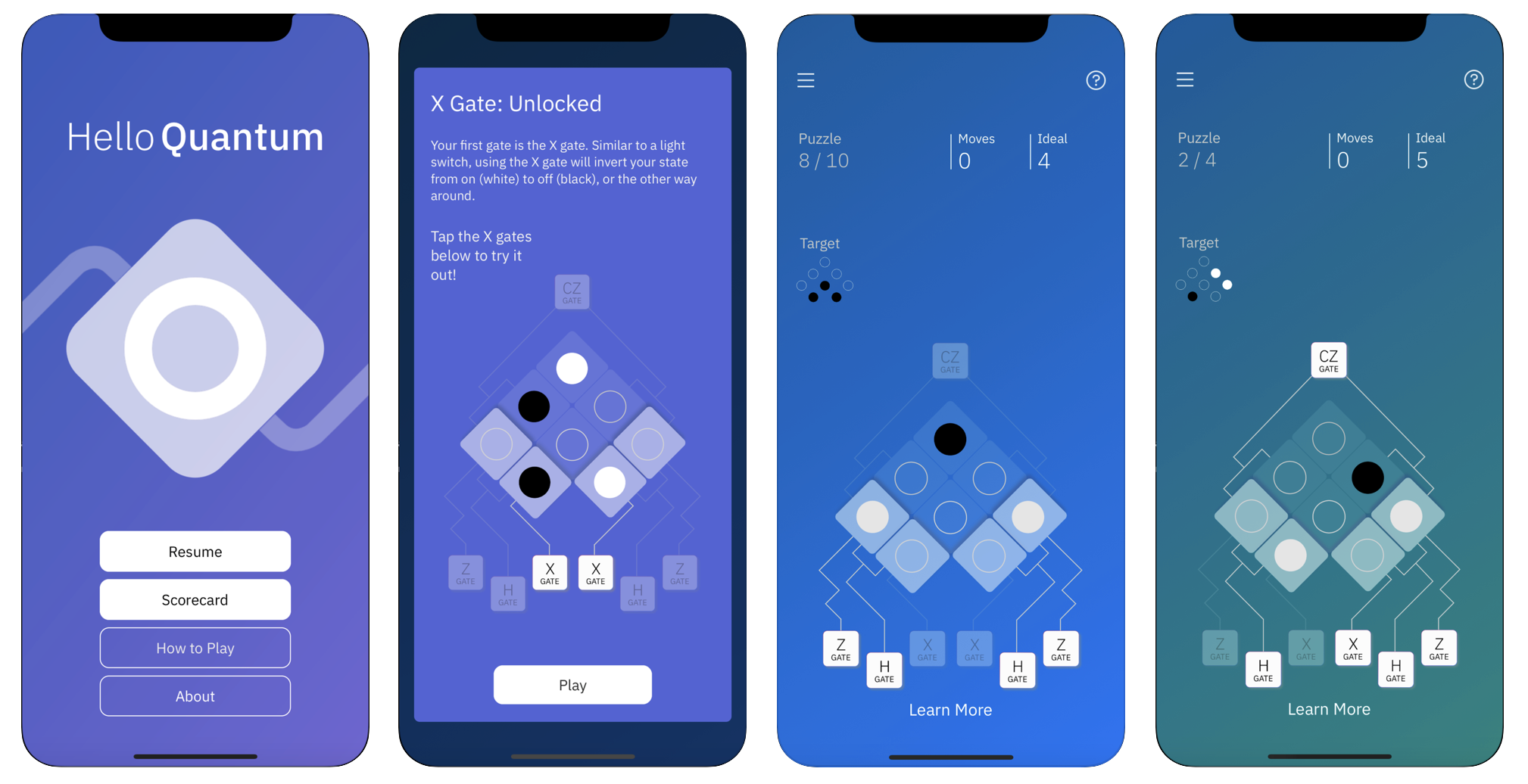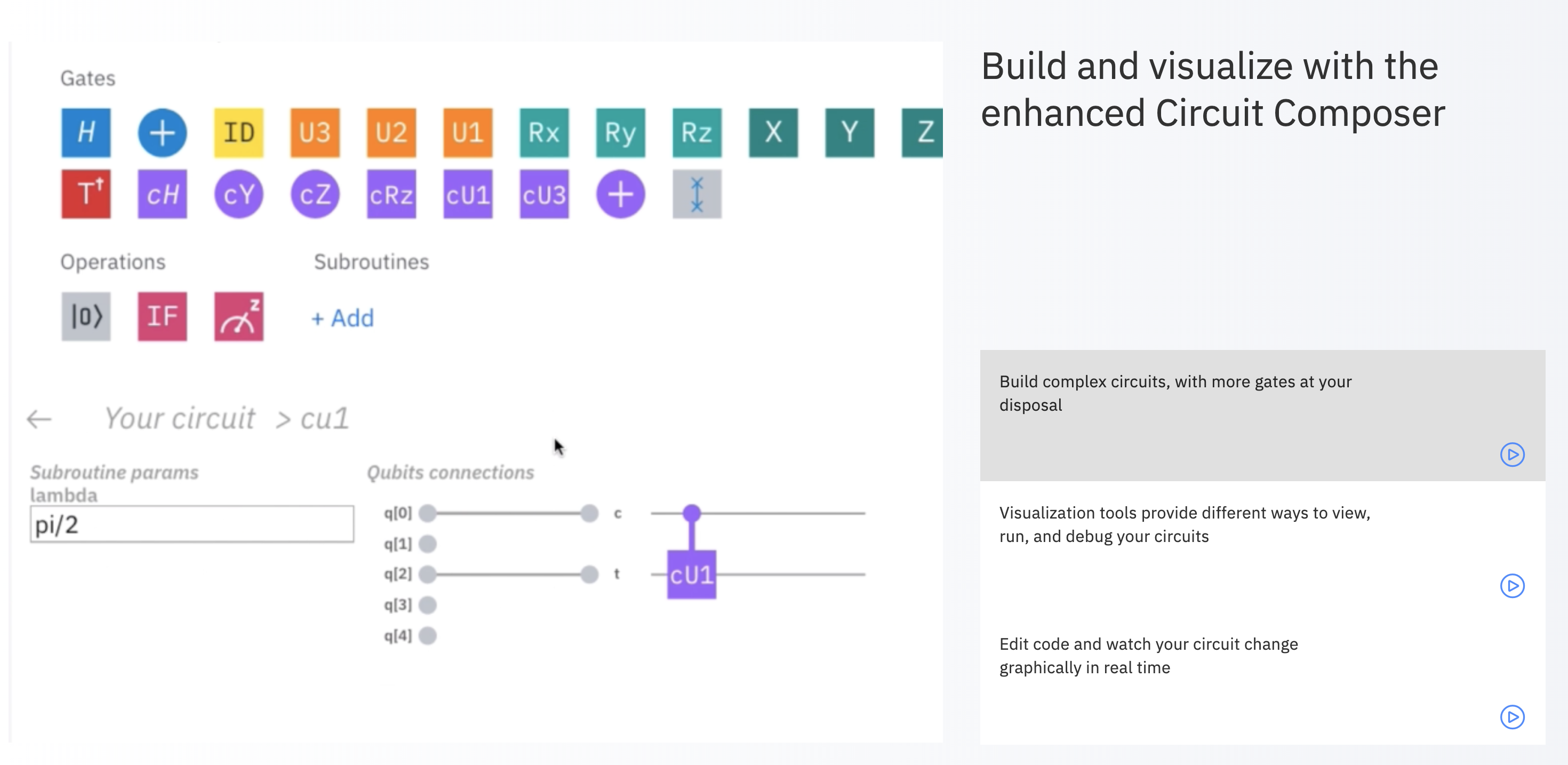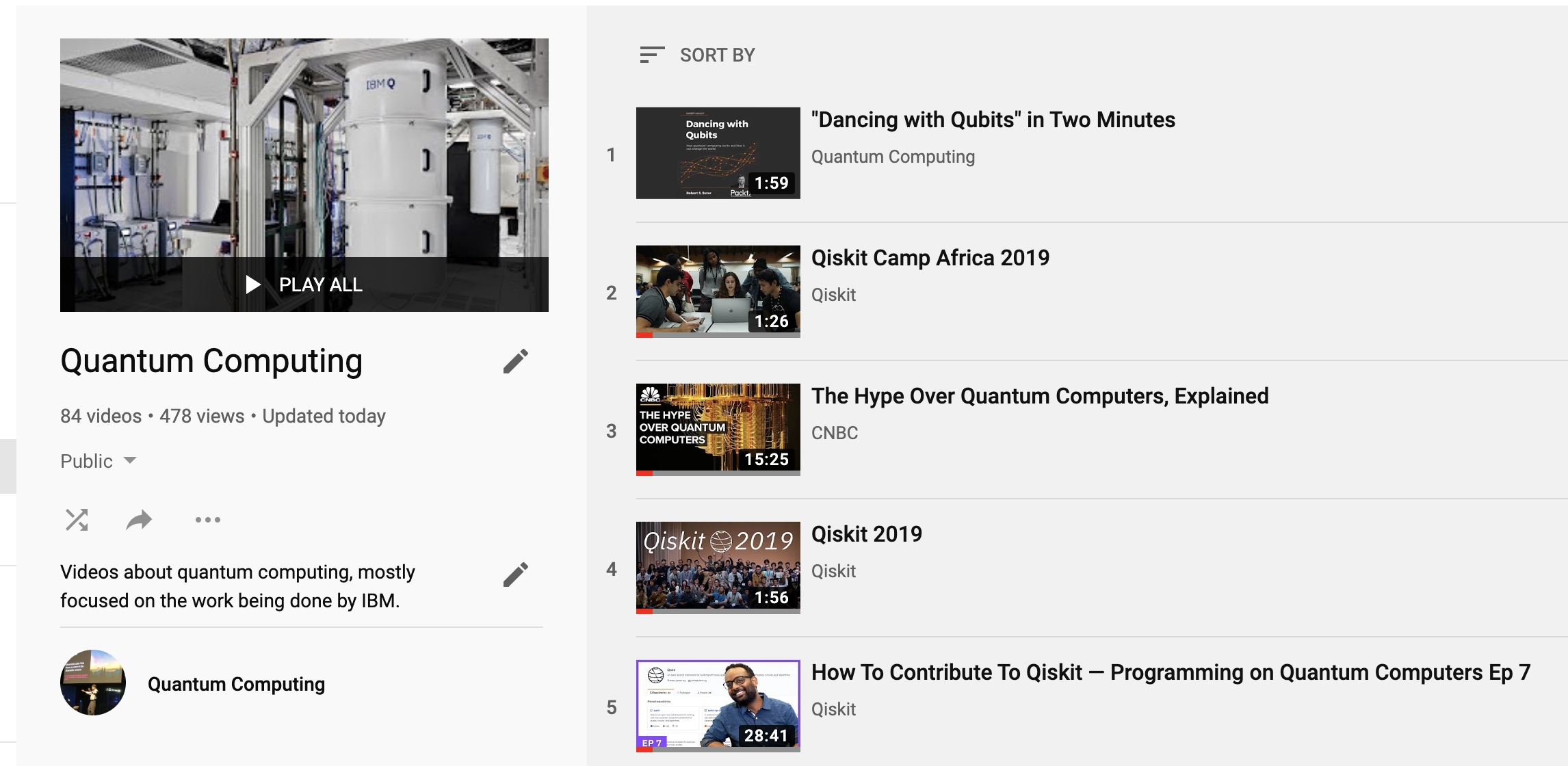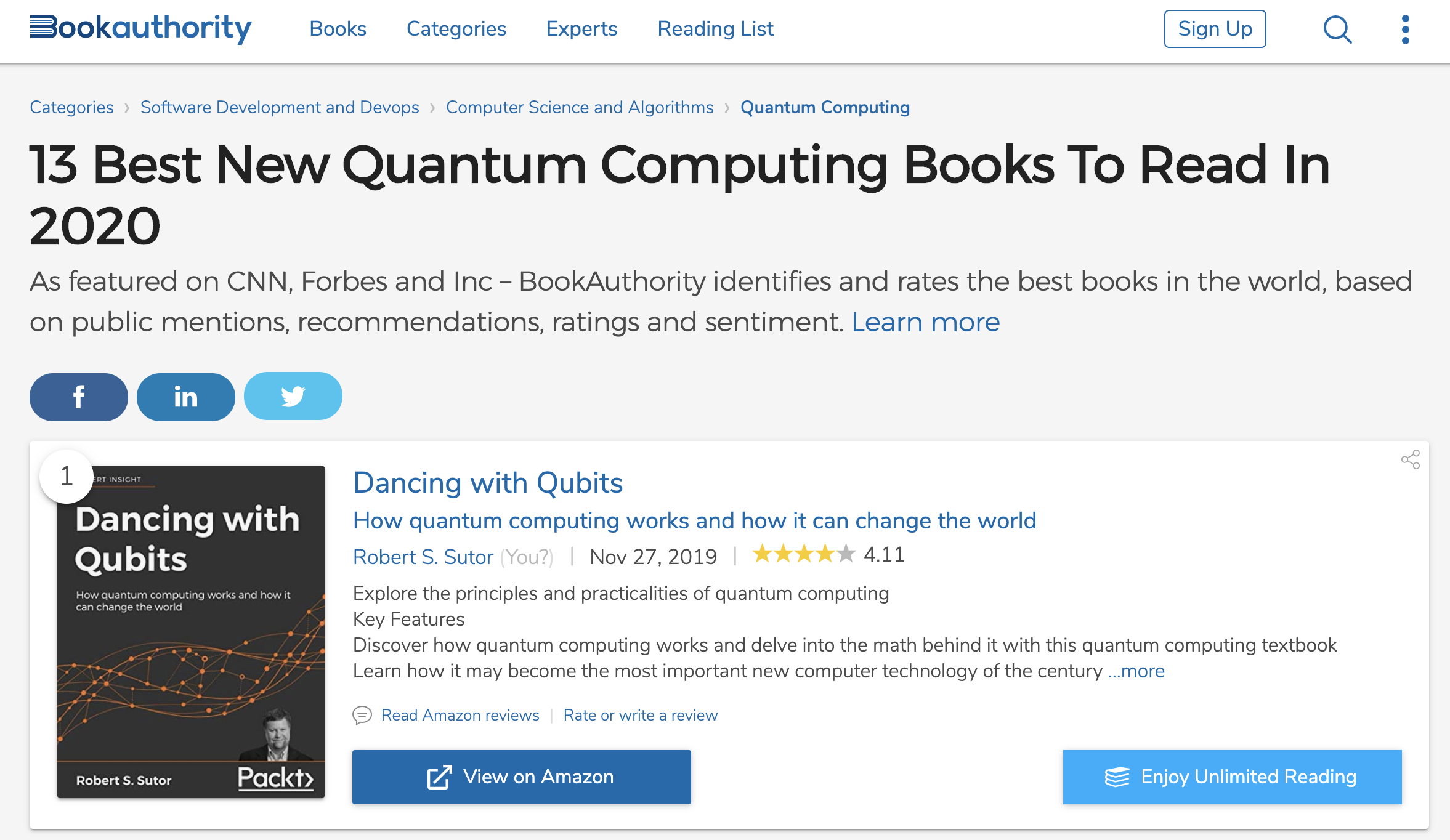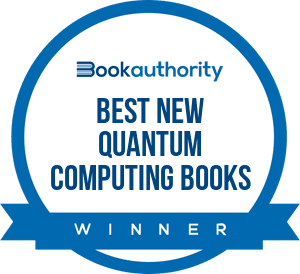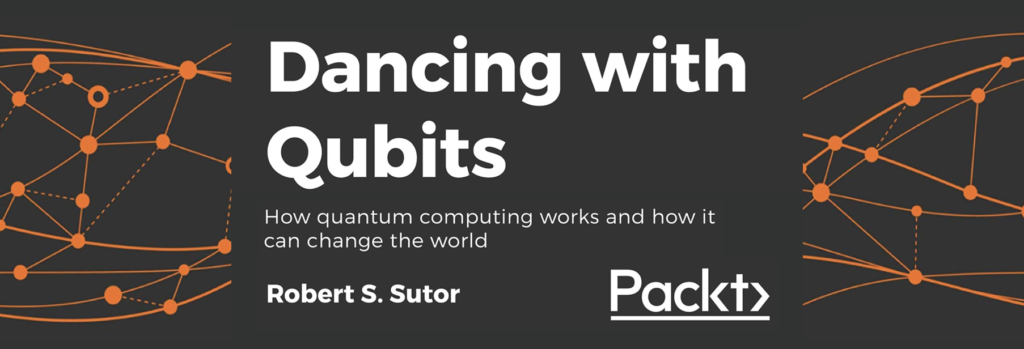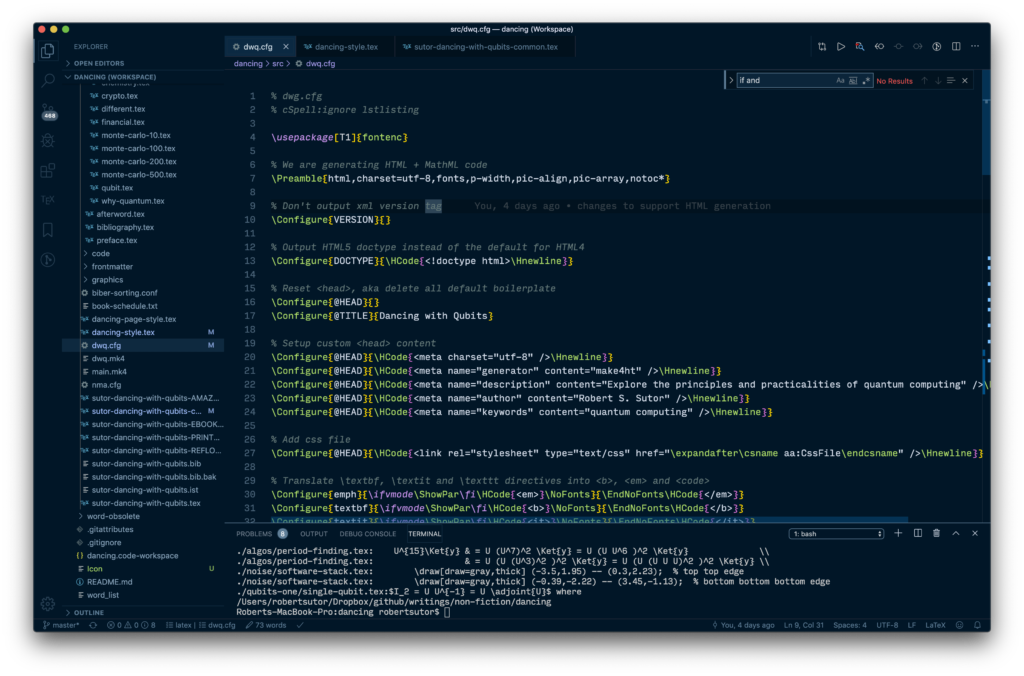This online course is a great way to go deeply into what makes quantum computing work. Join thousands of your global colleagues and get hands-on knowledge about IBM Quantum and Qiskit.
quantum computing
Hungarian Rhapsody hot sauce

Quantity made: Roughly 1 pint
Spiciness: Mild to medium, depending on the peppers you use
Ingredients
12 Hungarian wax peppers
1 1/4 cups of apple cider or white vinegar
4 large cloves of roughly chopped garlic
1 tablespoon of roughly chopped ginger
1 teaspoon of salt
1 teaspoon of brown sugar (optional)
Directions
- Strongly consider wearing plastic gloves when handling the peppers. Do not touch your eyes!
- Cut off the very top section of each pepper that includes the stem. Cut each pepper in half lengthwise. Remove the inner ribs and seeds if you want to reduce the heat of the final sauce. Cut each piece in half horizontally.
- Add the peppers, the vinegar, the salt, and the sugar to a small saucepan for which you have a cover. Bring to a boil, reduce the heat to a low simmer, cover, and cook for 30 minutes. Stir every 10 minutes.
- Remove the cover, add the garlic and ginger, and simmer uncovered for 15 minutes longer. The sauce will reduce slightly.
- Remove from the heat and cool to room temperature or for at least 20 minutes.
- Transfer the cooked mixture to a blender and pulse until liquefied
- At this point you can transfer to a 2 cup Mason jar and refrigerate. If you want a thinner sauce, force the sauce through a wire mesh sieve and then bottle.
- Refrigerate for at least 12 hours before using.
Notes
- In my experience, the sauce.will mellow and become less vinegary and less hot as it sits in the refrigerator over the first 48 hours.
- You will get a different sauce if you use different peppers, but you could, for example, substitute jalapeño peppers for one or more of the Hungarian wax peppers.
- Hungarian wax peppers vary tremendously in how hot they are. If you try the sauce and it is too hot, re-sample in 48 hours as mentioned above.
- Increase the amounts of garlic or ginger if you want those flavors to dominate more.
Dancing with Qubits: Quantum Computing and Finance update
In section 1.5 of my quantum computing book Dancing with Qubits, I discuss potential applications of the technology to financial services. An excellent survey article by my IBM Quantum colleagues is now on arXiv that updates and goes into much greater detail than what I covered.
“Quantum computing for Finance: state of the art and future prospects” by Daniel J. Egger, Claudio Gambella, Jakub Marecek, Scott McFaddin, Martin Mevissen, Rudy Raymond, Andrea Simonetto, Stefan Woerner, and Elena Yndurain has this abstract:
This paper outlines our point of view regarding the applicability, state of the art, and potential of quantum computing for problems in finance. We provide an introduction to quantum computing as well as a survey on problem classes in finance that are computationally challenging classically and for which quantum computing algorithms are promising. In the main part, we describe in detail quantum algorithms for specific applications arising in financial services, such as those involving simulation, optimization, and machine learning problems. In addition, we include demonstrations of quantum algorithms on IBM Quantum back-ends and discuss the potential benefits of quantum algorithms for problems in financial services. We conclude with a summary of technical challenges and future prospects.
I highly recommend it.
Interview with me on the state of quantum computing in PC Quest
Though I would have chosen a different title for the article (lol), there is a nice interview with me in PC Quest called “Quantum Computers cannot crack Covid Vaccine gaps—Not yet!.”
On that subject, though, I say
Quantum computers today cannot help develop a vaccine for COVID-19 since they are simply not powerful enough yet. Let me make a stronger statement: if you see claims of quantum computing helping COVID-19 research, those claims are pure marketing hype.
IEEE Quantum Week and IBM Quantum

This year’s IEEE Quantum Week is planned for October 12-16, 2020, in Denver, Colorado.
IEEE Quantum Week is a multidisciplinary quantum computing venue where attendees will have the unique opportunity to discuss challenges and opportunities with quantum researchers, scientists, engineers, entrepreneurs, developers, students, practitioners, educators, programmers, and newcomers.
 The IBM Quantum team is well represented at the conference with a keynote from Jerry Chow. We also have 7 tutorials and 2 workshops.
The IBM Quantum team is well represented at the conference with a keynote from Jerry Chow. We also have 7 tutorials and 2 workshops.
Our tutorials are on the following topics:
- Quantum programming, an introduction
- Quantum machine learning for data scientists
- Quantum hardware control: a hands-on introduction
- Quantum algorithms for optimization
- Quantum algorithms for chemistry simulation
- Assessing the quality of qubits and quantum computers
- Serious Games for Quantum Computing
Our workshops are:
- Control and design of superconducting qubits
- Software for quantum applications, algorithms, and workflows
Registration is now open.
Tonya Hall and I talk about quantum computing and Dancing with Qubits
It was my pleasure to talk again with Tonya Hall of ZDNet about quantum computing and, in particular, my book Dancing with Qubits. You can watch the video on YouTube:
Quantum computing article today in USA Today
USA Today published an article today called “Could quantum computing help beat the next coronavirus?” where they interviewed several of us in the IBM Quantum program. While the title is far-reaching, it refers to basic research today in how quantum computing might be used for calculations in the physical sciences and chemistry, in particular. It also mentions nascent financial services work via this quote from me:
For a consumer with a retirement fund, “quantum computers over the next 10 to 15 years … may help you make better personal financial decisions through the calculations that your broker is doing,” says Bob Sutor, an IBM Research vice president tasked with driving the quantum computing ecosystem.
Ethan Hansen and I talk about quantum computing in this new podcast
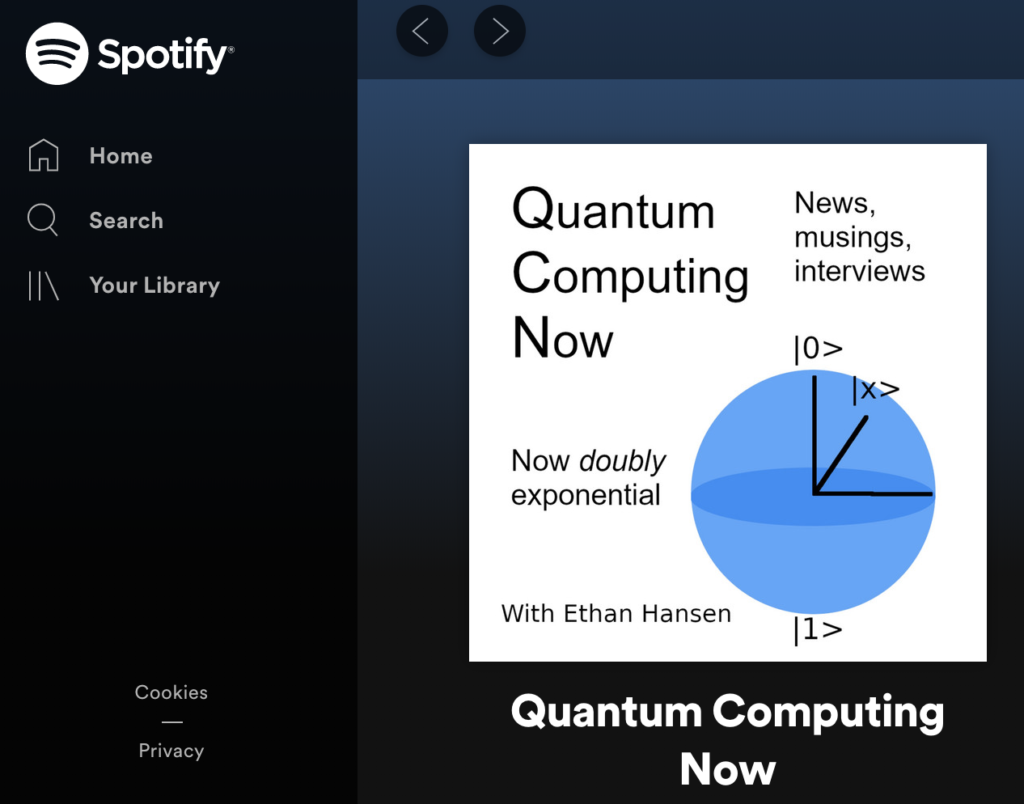
How to listen to my Packt podcast about quantum computing on your phone
The Packt podcast with me talking about my quantum computing and my book Dancing with Qubits is now available. Here is how you can listen to it on your iPhone. I presume the directions for Android are similar.
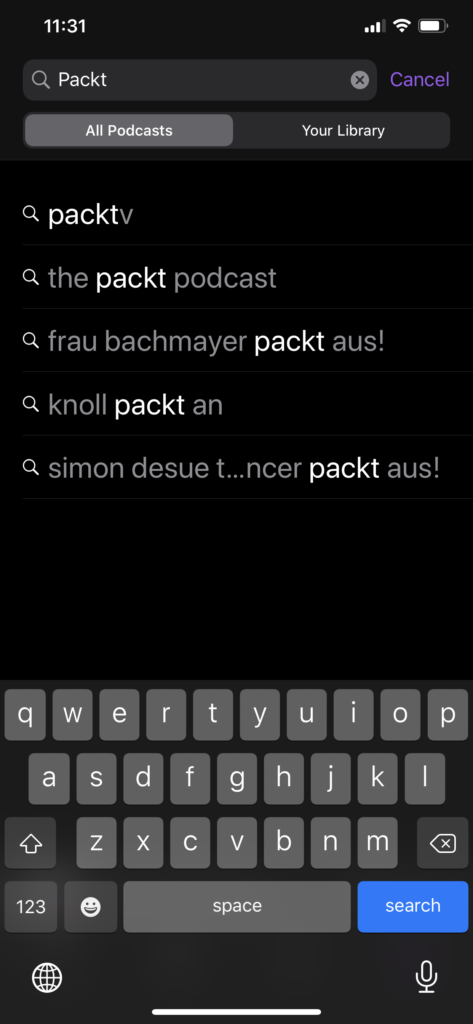 Open the Podcasts app on your phone. Click the magnifying glass and type
Open the Podcasts app on your phone. Click the magnifying glass and type Packt into the search field. Press Search. Press the packt podcast in the search results.SoundCloud Packt podcast with me about Dancing with Qubits and #QuantumComputing
Please join Stacy Munro, Richard Gall, and me for a podcast discussion about my new book about quantum computing, Dancing with Qubits.
https://soundcloud.com/packt-podcasts/quantum-computing-explained-ibms-robert-sutor-talks-about-the-new-paradigm-on-the-horizon
The Amazon Kindle version of Dancing with Qubits is now available!
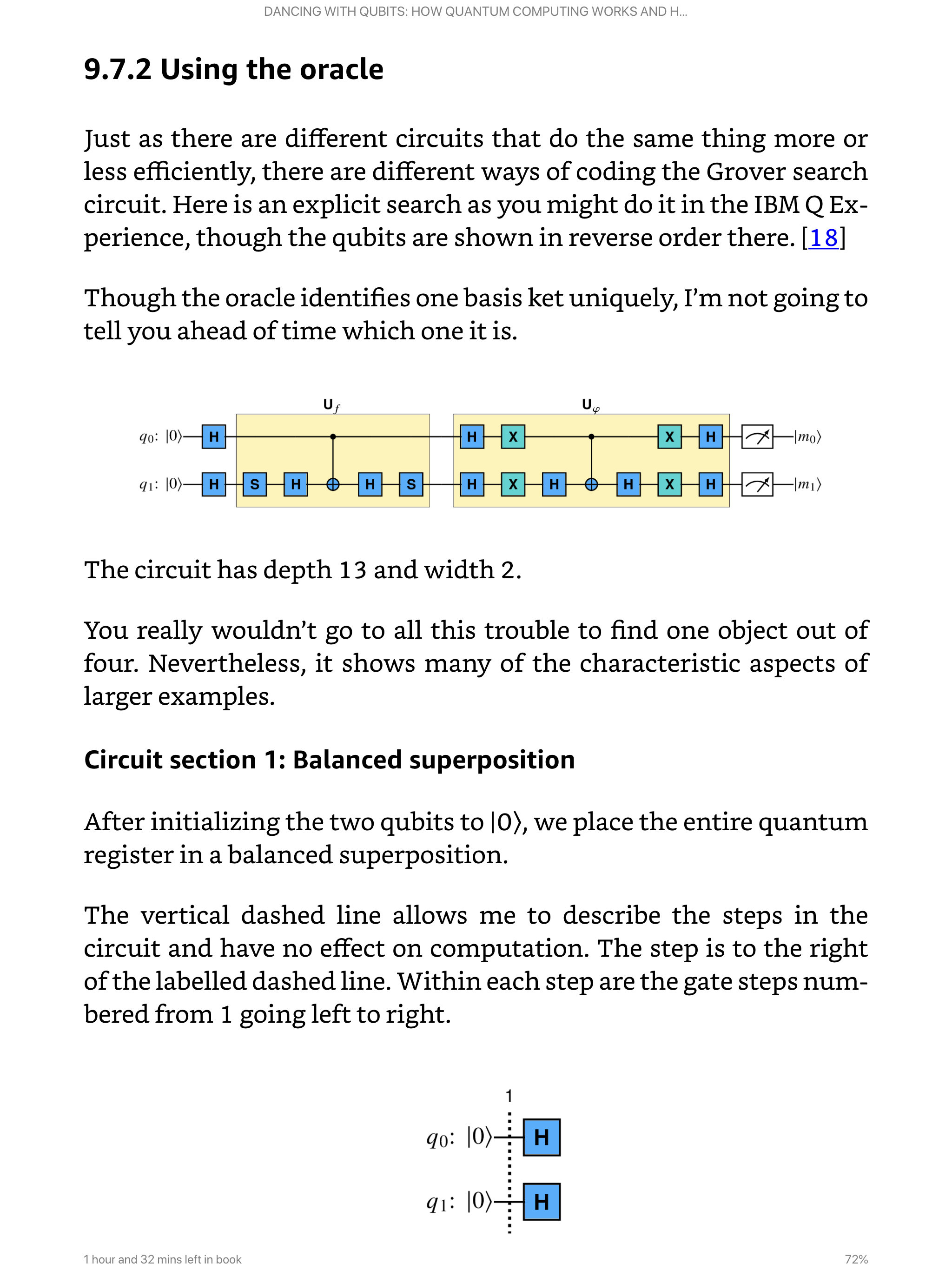 I’m pleased to announce that the Amazon Kindle version of my quantum computing book Dancing with Qubits is now available!
I’m pleased to announce that the Amazon Kindle version of my quantum computing book Dancing with Qubits is now available!
This book provides a comfortable and conversational introduction to quantum computing. I take you through the mathematics you need at a pace that allows you to understand not just “what” but also “why.” When we get to quantum computing, concepts like superposition and entanglement are shown to be natural ideas building on what we’ve already seen, and then illustrated via gates, circuits, and algorithms.
Throughout the book, I highlight important results, provide questions to answer, and give links to references where you can learn more. This allows the book to be used for self-study or as a textbook.
Important ideas like Quantum Volume are explained to give you a head start for reading more advanced texts and research papers. I provide many references to related content in math, physics, quantum computing, AI, and financial services. Dancing with Qubits concludes with questions for you to think about and ask experts so that you can gauge progress in the field over the next few years.
Features of the Kindle edition
- The text will get larger or smaller as you wish and you can change to a font that is comfortable for you to read.
- There are links throughout the book to other sections and the references in each chapter.
- Many of the references have links to external sources, such as arxiv or Nature for research papers.
- The content is in color, if your Kindle device supports it.
- You can search for terms throughout the book.
- I’ve maximized the number of mathematical expressions that are expressed textually (see below) to improve the reading experience.
The print version of Dancing with Qubits still has the full, rich mathematical formatting, albeit in black and white. In essence, whether you choose the print or Kindle version, the content is consistent and the formatting is the best I know how to produce for each medium.
Technical Notes
Here are a few comments about the production of the Kindle version, in case you are interested.
- The original content for Dancing with Qubits is in LaTeX. From that I can produce the black and white print version, a color PDF eBook, and an epub3 file from which the Amazon Kindle and several other MOBI eBook versions are created.
- I used make4ht and tex4ht to go from the LaTeX source files to HTML. While very powerful, the documentation is scarce and I spent many hours trying to figure how to make things work and then writing sed and Python scripts to fix things that were not quite right.
- I wrote Python scripts to create the various files needed for epub3, such as opf and navigation, and to break the 30,000+ line HTML file into smaller XHTML files. I used tidy several times to format the HTML and XHTML.
- The epub3 validators in several free epub3 editing apps either skipped problems entirely or gave false negatives. I found pagina EPUB-Checker to be the best software for validation.
- I wanted to maximize the amount of HTML formatting I could use and MathML is not available in a practical sense for all eBook formats. tex4ht produced very inconsistent results. So while I could express $x_2$ as x2 in the text without extra fonts, more two-dimensional objects like matrices had to be represented using images. I created macros to produce the right format based on what kind of document I was trying to produce.
- I used tikz/pgf and quantikz for the figures, especially the quantum circuit diagrams. I externalized the figures as JPEG images. It took quite a bit to figure out how to get them to be the right size for the Kindle version.
- Some math expressions in the book and chapter tables of contents have weird spacing if they involve subscripts or superscripts. This is an artifact of the Kindle software. This did not happen, for example, when I viewed the book in the Apple Books app.
Some practical things you can do to learn about quantum computing
People often ask me “Where should I get started in order to learn about quantum computing?”. Here are several steps you can take. I work for IBM, so things I link to will often be to the IBM Quantum program. Also, I acknowledge that several of the links and videos toward the beginning involve me, but we’ll get through those quickly.
Watch some introductory videos
If you only watch one video, watch this one from WIRED with Talia Gershon:
This one with me is from early 2019 and discussed the IBM Q System One:
Finally, this video from CNBC with Professor Scott Aaronson of the University of Texas Austin, Martin Reynolds of Gartner, and me brings things up to date in January, 2020. Note that I personally do not support many of the statements about “Quantum Supremacy” (horrible label, supercomputers do have massive amounts of storage, off-by-15-million-percent math error):
Get a book
If you are really just getting started and want to systematically work through the required math at an easy and conversational pace, my book Dancing with Qubits should prepare you for more advanced material and give you a start to reading research papers. (Shameless self-plug.)
If you are a hard core physics and/or computer science person, you want to have Quantum Computation and Quantum Information: 10th Anniversary Edition 10th Anniversary ed. Edition by Michael A. Nielsen and Issac L. Chuang in your library. It’s a little old by now, but if you want to end up doing quantum computing research, you will likely have to become very familiar and comfortable with the contents. Other books to consider are Quantum Computing: A Gentle Introduction (good on algorithms, “gentle” is subjective!) and Quantum Computing for Computer Scientists (a bit dated and make sure you get a copy of the errata).
Play a game
Hello Quantum is available for Apple iOS and Android and will teach you the basics of how quantum gates and circuits work.
Build and run circuits with a real quantum computer
Quantum simulators have their place for basic education, experimentation, and debugging. Note, though, that a quantum simulator is to real quantum computer hardware as a TV console flight simulator is to a real plane. If you want a job as a pilot, I would prefer you knew how to fly an actual airplane.
The easiest way to get started without writing code is with the IBM Quantum Composer within the IBM Quantum Experience.
The IBM Quantum Experience has over 200,000 registered users, so you’ll be joining a very large community of beginner, intermediate, and advanced users.
Learn Python
If you are going to write quantum computing code, learn Python. As I write this, the latest version is 3.8. You want Python 3, not Python 2.
Learn Jupyter Notebooks
This is the modern way of developing full documents with interactive code, executions, graphics, videos, and visualizations. It’s used within the IBM Quantum Experience but also many other computational and AI applications. You are mainly interested in how to use it through a browser, not how to run and maintain the console.
Website (introductory): Introduction to Jupyter Notebooks
Write quantum computing code in Qiskit
Qiskit is the leading open source platform for developing quantum computing code and applications. It’s available on Github and available under the Apache 2,0 license. It’s had over 300,000 downloads but I’m recommending you use it through your browser on the IBM Cloud. As with the Composer, it is available through the IBM Quantum Experience.
Whether you want to download Qiskit or use it online, the easiest way to get get started is to watch the series of videos by Abe Asfaw.
From there, you can watch the other videos and also learn about the Qiskit Community.
At this point you are ready to work your way through the online open source Learn Quantum Computing through Qiskit.
My YouTube quantum computing playlist
I have a running YouTube playlist about quantum computing where I capture videos mostly about quantum computing in general, IBM Quantum, the Qiskit open source quantum computing development environment, and my book Dancing with Qubits.
Podcast: Meet the meQuanics with Simon Devitt and me
My podcast with Simon Devitt discussing quantum computing, IBM Quantum, and my new book Dancing with Qubits is now available on Spotify.
Excerpt from Chapter 1 of Dancing with Qubits
Packt, the publisher of my quantum computing book Dancing with Qubits, just put this excerpt from the first chapter up on its website.
Great review of Dancing with Qubits by The Quantum Daily
I really appreciate this review of my new book Dancing with Qubits about quantum computing by Matt Swayne at The Quantum Daily!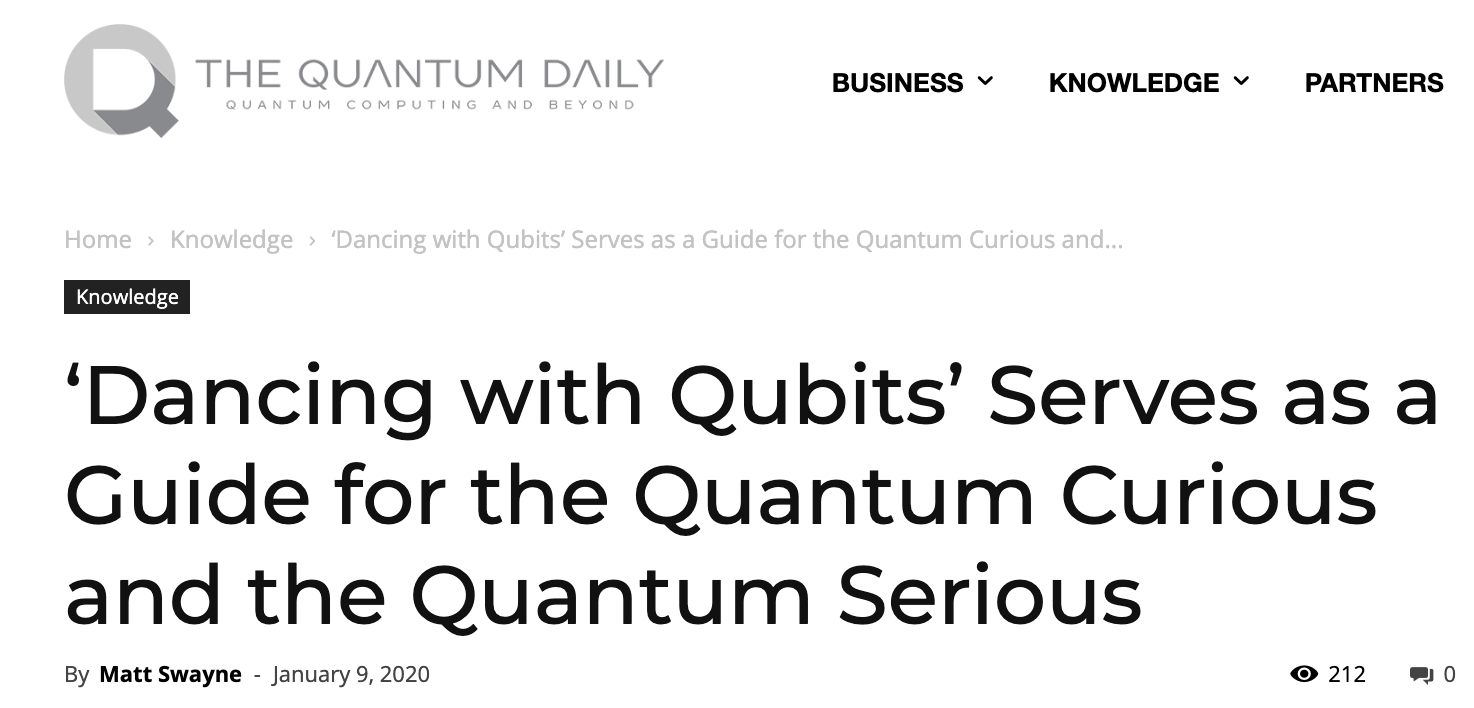
January 7, 2020: I’m speaking at HICSS – The Hawaii International Conference on System Sciences
Next week I’ll be speaking at HICSS in Maui, Hawaii, about quantum computing. I’ll also be answering questions about and signing copies of my book Dancing with Qubits.
Dancing With Qubits, First Edition: New Facebook page
I now have a new Facebook page for my book about quantum computing, Dancing with Qubits. I’ll be posting news about the books, my travel, book signings, and so on.
Dancing With Qubits, First Edition: What about the eBook?
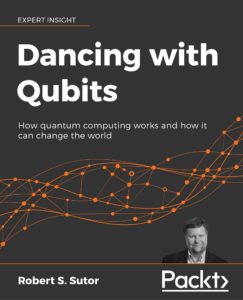 Yesterday was very exciting because I received my first printed copy of the book. There’s just something about holding a physical, printed book that you’ve labored over for many months. Others are starting to get their copies too, and I hope that within a couple of weeks everyone who pre-ordered the print version will have copies in hand.
Yesterday was very exciting because I received my first printed copy of the book. There’s just something about holding a physical, printed book that you’ve labored over for many months. Others are starting to get their copies too, and I hope that within a couple of weeks everyone who pre-ordered the print version will have copies in hand.
What if you ordered the eBook? Wasn’t that an option on Amazon? Why isn’t it listed there now? Why was your Kindle eBook order canceled?
The original plan was to provide the eBook in a PDF-like, print replica format that was in color and had active links within and beyond the book. You can still purchase this eBook at the Packt Publishing website.
As for Amazon, let’s just say that they ultimately wanted a reflowable version of the book rather than a fixed format version. As I’ve mentioned before, this presents many challenges to producing beautiful math. The reflowable format allows you to change the font and font size you use on your Kindle or in the Kindle app. It makes it easier to read on small devices. I understand the value.
Hence, I’m now working to create a reflowable version with one guiding principle: as much as possible, I must have a single source for the book that will produce future versions of the printed, fixed-format PDF, and reflowable formats
Here’s the strategy:
- Use tools like make4ht to translate the original LaTeX into HTML. Convert the HTML into MOBI and EPUB3 formats with a minimal amount of hand editing.
- Use standard HTML entities and CSS for as much of the in-sentence math as possible.
- Avoid using extra fonts within the HTML.
- Use automatically-generated PNG files for any other math.
- Use automatically-generated SVG and PNG files for figures coming from LaTeX tikz environments. (This is not working at all right now.)
- Use new macros for the math to produce either LaTeX or HTML versions.
- Use a small Python program I wrote to convert simple math to new markup using the new macros.
There is much work to do but things are looking promising. I can’t now give you any estimated time of arrival for the Kindle reflowable version or any guarantee that it will arrive eventually, but it’s my strong intention to make it happen. There are unknown unknowns yet to be discovered.
In the meanwhile, as I mentioned above, you can get a PDF-like digital version of the book from Packt.
A final point: despite several people staring at the text, a few errors crept in. These are mostly typos or omitted words. I’m keeping track of these on the corrections and clarifications page for the book. I incorporate these fixes into the text as they are discovered and I hope that future versions of the book, printed and digital, include them.
Previous: What’s in the book
| In December, 2019, Packt Publishing published my book Dancing with Qubits: How quantum computing works and how it can change the world. Through a series of blog entries, I talk about the writing and publishing process, and then about the content. |

